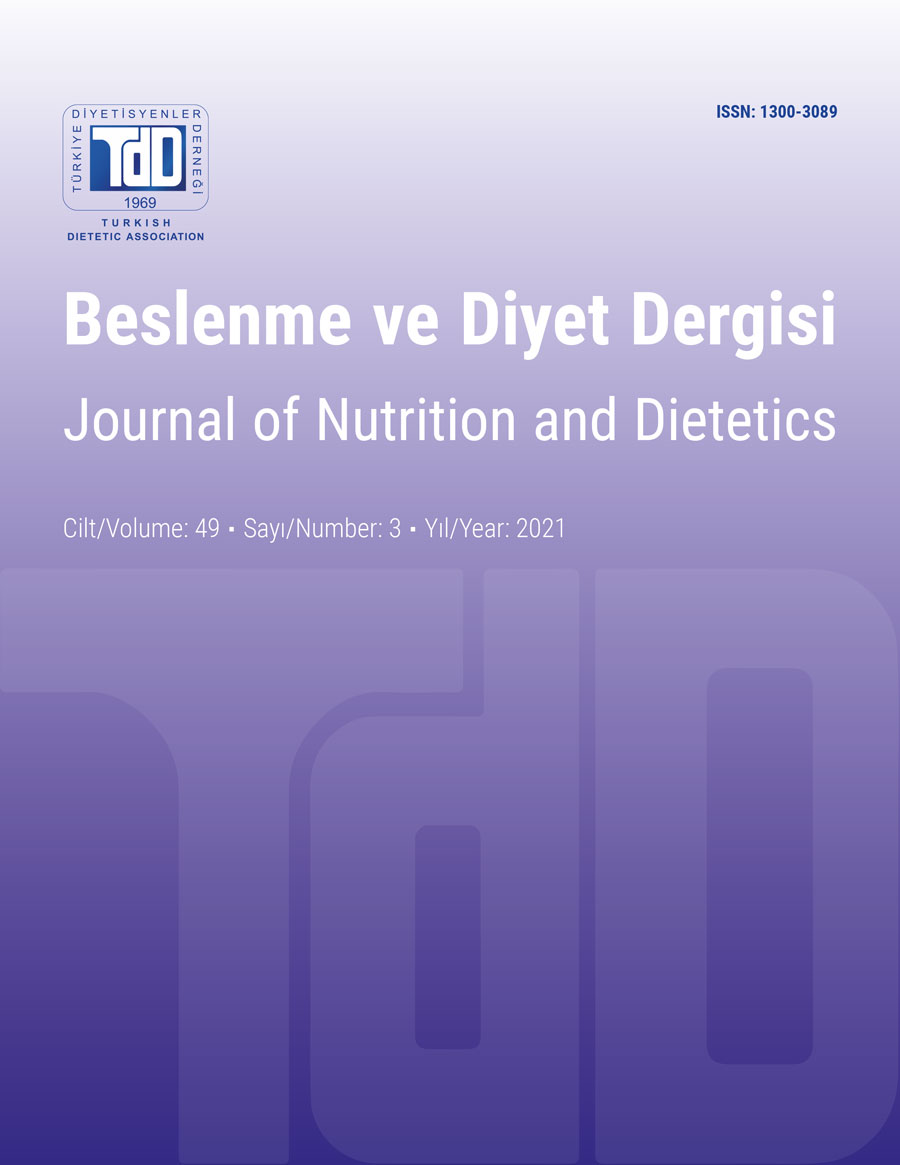Evaluation of the Menus of Food Service Systems of Different Institutions During COVID-19 Pandemic
DOI:
https://doi.org/10.33076/2021.BDD.1484Keywords:
COVID-19, food service, menu, nutrient profilingAbstract
Aim: The restrictions applied during the COVID-19 pandemic have affected food service systems (FSS) as well as many areas such as education, working hours, and social events. Within the scope of measures for preventing the transmission of the virus, take away-lunch box menus were served instead of table service of normal menus in FSS. This study was carried out to examine the menu types of different FSS of institutions in Ankara during the pandemic period.
Subjects and Method: In the study, two different menus (lunch box and normal) of three different institutions which serve one meal a day food service (public, private and semi- private) were examined, and the energy, macro, and micronutrient contents of the menus were evaluated in terms of adequacy according to the Turkey Nutrition Guide (TUBER). The nutrient profile of the menus was examined with the Nutrient Rich Nutrient Index (NRF) 9.3.
Results: The highest NRF9.3 score (85.7±18.9) was found in the normal menu of the public institution, and the lowest NRF9.3 score (3.3±3.6) was found in the lunch box of the private institution across all the menus. The menu providing the highest energy (1516±284 kcal) was the normal menu of the semi-private institution, while the lowest average energy (927±83 kcal) was found in the lunch box of private institution. The lunch box in private institutions were insufficient in terms of meeting energy requirements for men, and protein and fiber requirements for both genders. It has been determined that the requirements of these nutrients were met in all other menus.
Conclusion: In order to contribute to the adequate and balanced nutrition of individuals and to support the immune system functions, it should be ensured that the menus presented in FSS, including different service types such as lunch box, meet the energy and nutrient requirements of the consumers, have a rich nutrient profile and high diet quality. Therefore, the necessity of employing dietitians in institutions should not be ignored.

